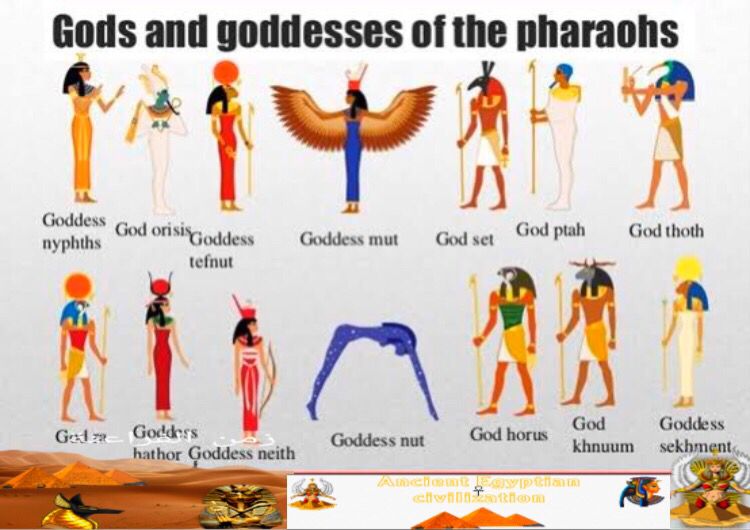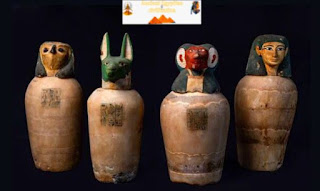Mummification in ancient Egypt and types of mummification
Mummification is considered one of the most brilliant nuns that the ancient Egyptians were famous for, and Egypt is considered the first credit for it, and then some other countries took it from it
And the ancient Egyptians sought, as a result of a belief in life after death, to take the necessary and necessary means to keep the body safe until the return of the soul
Since prehistoric times, the Egyptians were keen to bury their dead in a cemetery that began in the form of a simple hole in the ground and quickly developed into a simple room in the ground and soon developed into a square or rectangular room surrounded by a group of side rooms that were used to store collectibles. The deceased (later the funerary furniture) and the highest burial room was a mastaba, which later developed into several terraced mastabas, a pyramid, and finally a tomb carved into the rock
The word embalming refers to the treatment of the body with aromatic and non-aromatic materials, which leads to its preservation
The word embalming means (the comprehensive treatment of the body), and for this reason, the treated body became known as the word mummification Mummy Which was distorted in the Arabic language to mummy, and Lucas mentions that the word mummy may be Persian in the sense of bitumen (bitumen) and that it was launched in late ages on the mummified Egyptian corpses due to its color being close to bitumen After examining and analyzing the mummified bodies, it became clear that the bitumen was not used in the mummification of Egyptian mummies
The ancient Egyptians did not leave us a document telling us the materials and steps that the embalmers followed while they were doing this task, and that some of the materials used by the embalmers, despite all the analyzes and studies that took place on human mummies, animals, birds, reptiles, and other creatures, were among the secrets of the profession, or they no longer exist in the environment. This is why our knowledge of mummification remains based on what Herodotus mentioned in his writings about Egypt. This information includes the following:
1 - The drying of the body was one of the basic steps of the mummification process, and it was done either naturally through the sun's rays or artificially through heating at a certain temperature of the fire.
2- Some of the materials for preserving the body are salt, lime, natron, resin, beeswax, cinnamon, henna, cedar oil, juniper seeds, onions, palm stalks, and sawdust.
3 - Mummification was limited to senior people due to the high cost, and in later times simple methods of mummification appeared through drying with natron
4- Mummification remained known in Egypt until the end of the Roman era
5 - The dry soil helped to preserve some bodies without mummification
6 - The oldest mummy known to us so far is the mummy of King Seqnan Ra (the Seventeenth Dynasty), who was killed in a spear against the Hyksos.
7 - The ancient Egyptian treated the linen rolls with materials that made them able to retain their properties
8- The viscera were not extracted in all embalming operations
A summary of the embalming process for the ancient Egyptians is that they used to take the dead to the embalming house, which was also called (the beautiful house) or (the place of purification), which is a room that contains a table of wood with support of wood also on it (similar to the anatomy room now)
After that, an opening is made in the body on the left side, and the intestines, liver, and lungs are extracted, processed, and placed in the four viscera pots (canopic pots) that are protected by the four sons of Hur, and they are: (Hapi, Amsti, Duamot-ef, and Qabh-snow-f).
Hapi had the head of a monkey, Amsti with the head of a human, Duamot F with the head of a jackal, and Qebh Snow F with the head of a falcon
After that, the brain is extracted by inserting a thin machine into the nostril, and the membranes of the brain are cut into small pieces, then these small pieces are taken out using a small metal machine twisted at the end in the form of a spoon.
After that, the corpse was soaked in a bath with a solution of natron so that the liquids in the body could be disposed of so that it would not become moldy. The period of using natron took between 40 and 70 days, after which the mummy would be ready for burial.
And after making sure that the body got rid of these liquids and reached the degree of complete dryness using the sun's rays or by placing them in ovens at a certain temperature, the process of stuffing the rib cage and abdomen begins with a linen cloth, resin, and sometimes sawdust, so that the mummy appears in its natural form, and then comes the process of anointing the body. with oil
The heart was left in the body because it would play a role during the trial of the deceased
After that, the entire body was covered with resin, then the organs were wrapped with linen wraps, and after the opening of the body was sewn up, a complete wrapping process was carried out with several wraps that differed according to the economic status of the deceased.
Herodotus and Diodorus of Siculus referred to three methods of embalming:
The first method: It is very expensive and is the previous embalming method
The second method: The corpse was injected with cedar oil through the anus and then treated with natron
The third method: was limited to the poor class and was based on the use of an enema to clean the viscera, then the body was treated with natron
In the Roman era, the Egyptians were satisfied with burying their dead with linen fabric and burying them in tombs with soil without embalming, and for this reason, mummies are considered the work of the ancient Egyptians in ancient Egyptian times only.




Nice 👍
ReplyDeleteThank you
Deletewooow
ReplyDelete